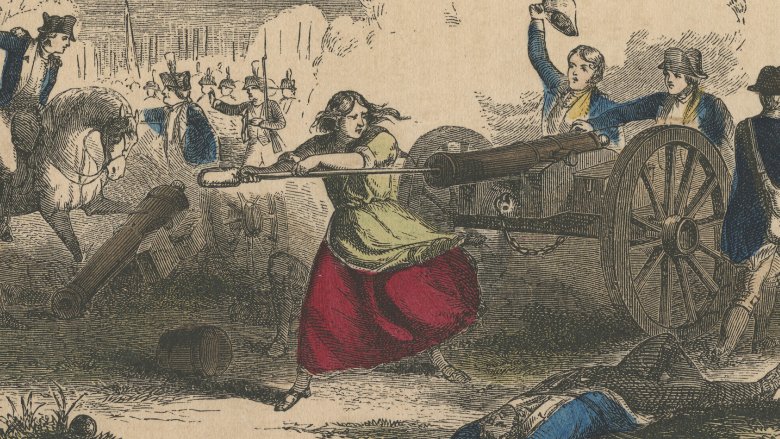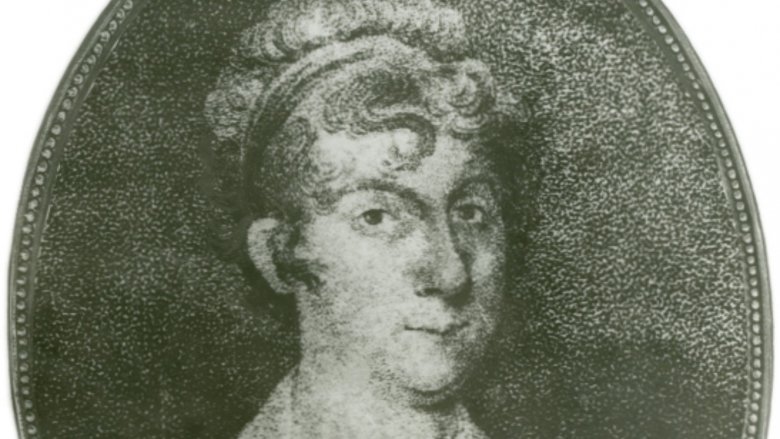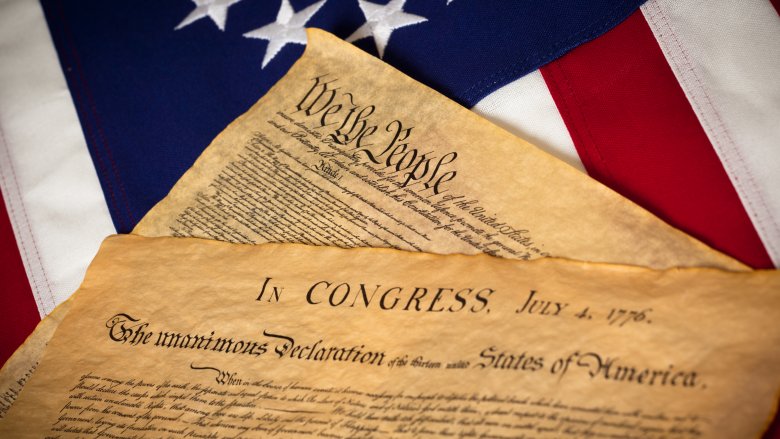What Life Was Like For Women During The American Revolution
In 1776, American colonists did something truly revolutionary by kicking King George III to the curb via the Declaration of Independence. However, when Thomas Jefferson independently declared "that all men are created equal" and endowed with "inalienable rights" to "life, liberty and the pursuit of happiness," he certainly wasn't referring to Sally Hemings, who as Jefferson's slave didn't have the freedom to refuse his sexual advances, according to Monticello.org. Nor did the Declaration of Independence apply to free women because, as The Story of American Freedom explains, independence was considered "a masculine trait," while dependence was "the normal lot of women."
We hold these truths to be self-satirizing
According to the Oxford Research Encyclopedia of American History, women played a pivotal part in the American Revolution. Before the war women refused to consume English goods "and [attacked] those merchants who refused to boycott prohibited goods." They joined in revolutionary riots and wrote poems and plays. In one of the most notable examples, a slave named Phyllis Wheatley became the first African American female to have her work published in the U.S, per the American Battlefield Trust. She wrote poetry about "patriotism and human virtues" and dedicated a piece to George Washington, which she read to him personally. (She received her freedom in 1778, after her owner died.)
The Smithsonian Postal Museum writes that Mary Katherine Goddard published her brother's newspaper and printed the first copy of the Declaration of Independence. Additionally, Goddard "may have been the first woman postmaster in colonial America", investing her own money to keep operations afloat during the war. However, the postmaster general forced Goddard to resign in 1789 because the physical exertion of long-distance mail delivery was deemed "unmanageable for a woman."
The warrior women of the Revolution
During the Revolutionary War, women filled men's work shoes, running businesses and farms as the men set out to make the Redcoats even redder. But women braved the battlefield as well. The Museum of the American Revolution explains that they served as nurses, soldiers, seamstresses, and spies. They kept troops fed by foraging for and cooking food. Women were so "indispensable" that they received pay, but because they weren't men, they got paid far less. For slaves the conflict looked like an opportunity to achieve freedom. Per History, more than 20,000 runaway slaves ran right to the British. The women among them "worked as nurses, cooks and seamstresses."


